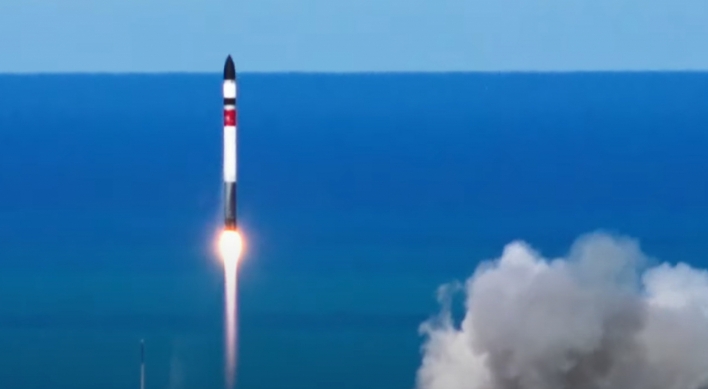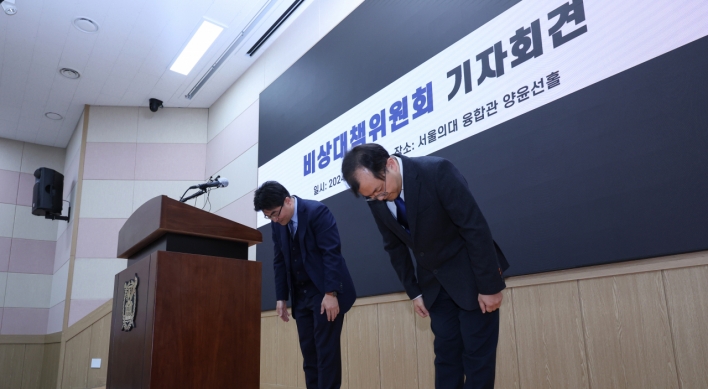Take your pick: Air pollution or earthquakes?
This is a choice China faces as it shifts its electricity generation from coal-fired plants to hydroelectric dams. According to recent data, dams are partly responsible for the rise in earthquakes in western China, including ― quite possibly ― a 6.6 temblor that hit Yunnan Province last week.
The underlying issue is electricity ― and China’s appetite for it. Between 2005 and 2011, total electricity generation in China increased by 89 percent , according to the U.S. Department of Energy, and will likely triple by 2040. Of the challenges associated with power generation on this scale, the biggest by far is that around 69 percent of China’s electricity comes from coal and other fossil fuels, which cause the sort of air pollution that has had Beijing choking this week.
Hence China’s investment in dams and hydroelectric power. According to Bloomberg, in just the first half of 2014, China has added enough hydroelectric capacity to replace 26 million tons of polluting coal. And that’s just this year. For more than two decades, China’s dam building has made hydro the second-largest source of power after coal, with a 23 percent share. Chinese media reports that the government is planning 25 hydroelectric dams on the upper stretches of the Yangtze River alone. Once operational, those dams will be able to generate three times the amount of electricity produced by China’s Three Gorges Dam, the world’s largest.
That power may be clean, but is it safe? Dams aren’t an environmentally perfect solution: They destroy scenic river canyons, habitats, even species. What’s less widely discussed is that dams and reservoirs can also cause earthquakes. In the late 1930s, the reservoir behind the newly built Hoover Dam caused more than 600 small earthquakes. Sixty years later, scientists monitoring the reservoir behind Three Gorges registered 3,429 small earthquakes during the six-and-a-half years it took to fill it, a thirty-fold increase from the pre-dam period.
Even before Three Gorges Dam was built, the government knew of its dangers. According to a 2012 analysis of Chinese seismic maps and dam projects by Probe International, a Canadian environmental organization, 98.7 percent of the 137 hydroelectric dams built, planned or underway in western China are located in “zones with a moderate to very high level of seismic hazard.” To be fair, the question of whether or not dams are responsible for the largest earthquakes in the region (such as the 2008 Wenchuan quake that took 80,000 lives) remains controversial. But it’s not an unreasonable one to ask, and it’s been considered in respected journals such as Science and ― this week ― Nature. It’s also been widely discussed on China’s Internet ― especially after large quakes near reservoirs in western China, such as the one in Yunnan this week that destroyed 7,000 buildings and forced the evacuation of 59,000 people (the death toll currently stands at one, but is likely to rise as rescuers reach the remote area).
And it could be worse. The dams in this region are being built in an unusual, dense cascade whereby a dam is constructed just upstream from the reservoir of the dam below. Thus, if one fails, it might set off a process that Probe International describes as “a deadly domino effect of collapsing dams.” Will it happen? Nobody knows, in part because the seismic data that might give a fuller picture of the risks is controlled by the hydropower companies.
Still, from the perspective of the Chinese government, the benefits of hydropower outweigh its dangers. That’s understandable, especially in light of the undisputed problems associated with coal burning and its effects on climate change. Indeed, as Bloomberg noted in August, Chinese efforts to curb air pollution ― which include boosting hydropower ― will help cut imports of power-plant coal into China by 2.7 percent this year (already the cost of such coal is at its lowest since 2007). That’s a tangible achievement. But as this week’s quake reminds us, in solving one problem, China’s government could well be creating another.
By Adam Minter
Adam Minter is an American writer based in Asia, where he covers politics, culture, business and junk. He is the author of “Junkyard Planet: Travels in the Billion Dollar Trash Trade.” ― Ed.
(Bloomberg)
This is a choice China faces as it shifts its electricity generation from coal-fired plants to hydroelectric dams. According to recent data, dams are partly responsible for the rise in earthquakes in western China, including ― quite possibly ― a 6.6 temblor that hit Yunnan Province last week.
The underlying issue is electricity ― and China’s appetite for it. Between 2005 and 2011, total electricity generation in China increased by 89 percent , according to the U.S. Department of Energy, and will likely triple by 2040. Of the challenges associated with power generation on this scale, the biggest by far is that around 69 percent of China’s electricity comes from coal and other fossil fuels, which cause the sort of air pollution that has had Beijing choking this week.
Hence China’s investment in dams and hydroelectric power. According to Bloomberg, in just the first half of 2014, China has added enough hydroelectric capacity to replace 26 million tons of polluting coal. And that’s just this year. For more than two decades, China’s dam building has made hydro the second-largest source of power after coal, with a 23 percent share. Chinese media reports that the government is planning 25 hydroelectric dams on the upper stretches of the Yangtze River alone. Once operational, those dams will be able to generate three times the amount of electricity produced by China’s Three Gorges Dam, the world’s largest.
That power may be clean, but is it safe? Dams aren’t an environmentally perfect solution: They destroy scenic river canyons, habitats, even species. What’s less widely discussed is that dams and reservoirs can also cause earthquakes. In the late 1930s, the reservoir behind the newly built Hoover Dam caused more than 600 small earthquakes. Sixty years later, scientists monitoring the reservoir behind Three Gorges registered 3,429 small earthquakes during the six-and-a-half years it took to fill it, a thirty-fold increase from the pre-dam period.
Even before Three Gorges Dam was built, the government knew of its dangers. According to a 2012 analysis of Chinese seismic maps and dam projects by Probe International, a Canadian environmental organization, 98.7 percent of the 137 hydroelectric dams built, planned or underway in western China are located in “zones with a moderate to very high level of seismic hazard.” To be fair, the question of whether or not dams are responsible for the largest earthquakes in the region (such as the 2008 Wenchuan quake that took 80,000 lives) remains controversial. But it’s not an unreasonable one to ask, and it’s been considered in respected journals such as Science and ― this week ― Nature. It’s also been widely discussed on China’s Internet ― especially after large quakes near reservoirs in western China, such as the one in Yunnan this week that destroyed 7,000 buildings and forced the evacuation of 59,000 people (the death toll currently stands at one, but is likely to rise as rescuers reach the remote area).
And it could be worse. The dams in this region are being built in an unusual, dense cascade whereby a dam is constructed just upstream from the reservoir of the dam below. Thus, if one fails, it might set off a process that Probe International describes as “a deadly domino effect of collapsing dams.” Will it happen? Nobody knows, in part because the seismic data that might give a fuller picture of the risks is controlled by the hydropower companies.
Still, from the perspective of the Chinese government, the benefits of hydropower outweigh its dangers. That’s understandable, especially in light of the undisputed problems associated with coal burning and its effects on climate change. Indeed, as Bloomberg noted in August, Chinese efforts to curb air pollution ― which include boosting hydropower ― will help cut imports of power-plant coal into China by 2.7 percent this year (already the cost of such coal is at its lowest since 2007). That’s a tangible achievement. But as this week’s quake reminds us, in solving one problem, China’s government could well be creating another.
By Adam Minter
Adam Minter is an American writer based in Asia, where he covers politics, culture, business and junk. He is the author of “Junkyard Planet: Travels in the Billion Dollar Trash Trade.” ― Ed.
(Bloomberg)
-
Articles by Korea Herald


![[Exclusive] Korean military set to ban iPhones over 'security' concerns](http://res.heraldm.com/phpwas/restmb_idxmake.php?idx=644&simg=/content/image/2024/04/23/20240423050599_0.jpg&u=20240423183955)
![[AtoZ into Korean mind] Humor in Korea: Navigating the line between what's funny and not](http://res.heraldm.com/phpwas/restmb_idxmake.php?idx=644&simg=/content/image/2024/04/22/20240422050642_0.jpg&u=)

![[Graphic News] 77% of young Koreans still financially dependent](http://res.heraldm.com/phpwas/restmb_idxmake.php?idx=644&simg=/content/image/2024/04/22/20240422050762_0.gif&u=)




![[Pressure points] Leggings in public: Fashion statement or social faux pas?](http://res.heraldm.com/phpwas/restmb_idxmake.php?idx=644&simg=/content/image/2024/04/23/20240423050669_0.jpg&u=)








